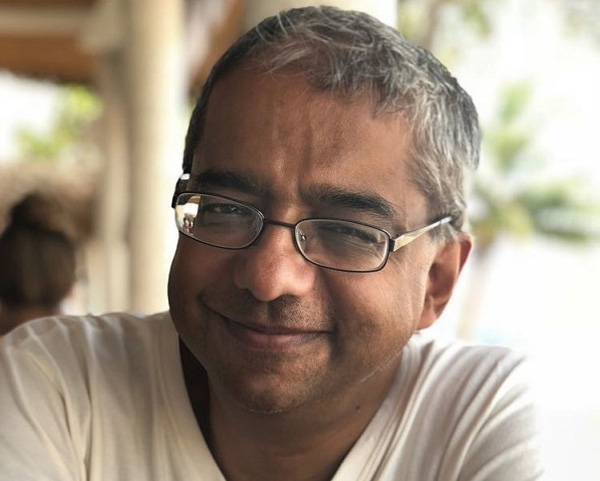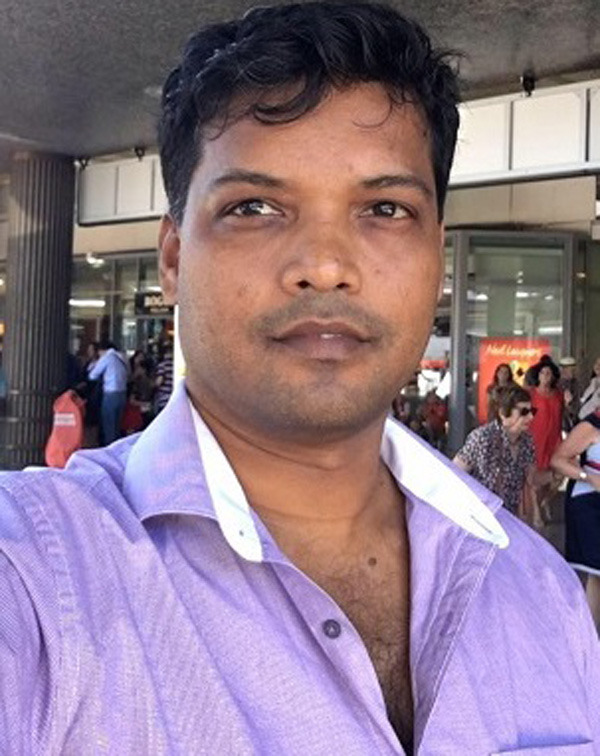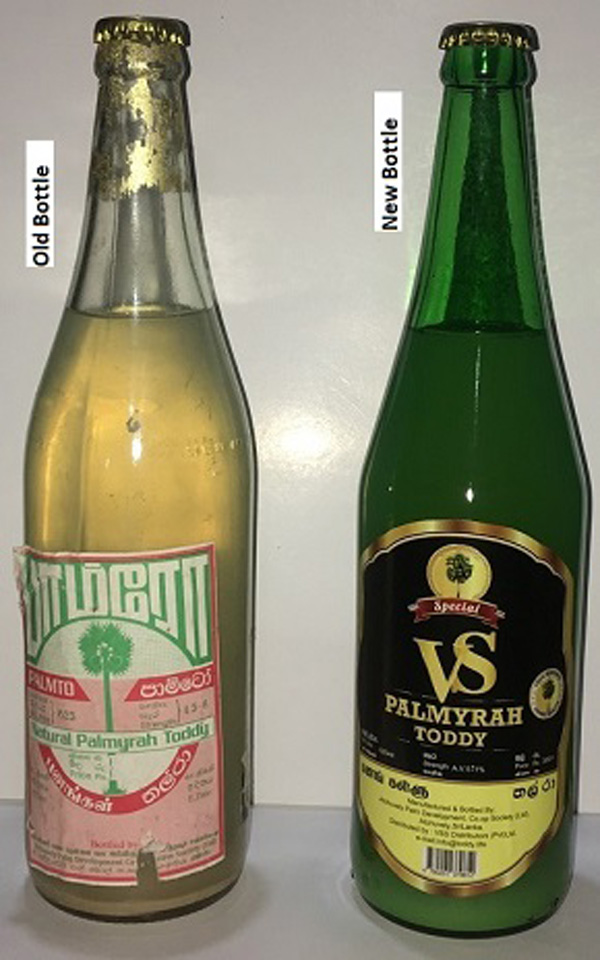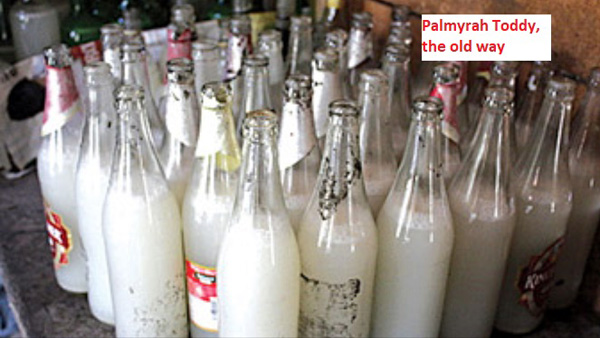From Toronto to Toddy, a Jaffna Entrepreneur’s Journey – By Jekhan Aruliah

Jekhan Aruliah
When it comes to investment in the North there is far more talk than there is action. A rare example of action is Suganthan Shanmuganathan. Having fled the Sri Lankan Civil War 25 years ago as a teenage schoolboy, Suganthan came back to Jaffna from Canada in 2014 with his wife and children. In the last few years Suganthan has rescued and created several businesses in the North. Here is his story so far. A story of resilience and resourcefulness that allowed him to survive and learn from many hard lessons to become a successful entrepreneur in Sri Lanka’s Northern Province.
Childhood: Suganthan was born in 1973 to a prosperous Jaffna family. He was educated at the prestigious Jaffna College in Vaddukoddai. Though his father passed away in 1983 of natural causes, his mother was still able to bring him and his younger sister and two brothers up in comfortable circumstances. The Sri Lankan Civil War changed this. In 1989 the 16 year old Suganthan left Jaffna to go to Canada and live with an uncle who himself had fled the war a few years earlier.
It would be true to say Suganthan’s life has been a series of ups and downs. A big down was the war, which required him to flee Jaffna leaving behind his home and family. The next by comparison trivial down came hours later when the airline lost his luggage. Suganthan arrived in Canada with only the clothes he stood in and what he had in his pockets. He borrowed $100 from his uncle and bought two pairs of trousers and a pair of shoes, and so started a new life in North America.

Suganthan Shanmuganathan
25 years in Canada: Suganthan’s life had changed from being mollycoddled by his mother in Jaffna, to working non-stop in Toronto. Still a schoolboy he joined the 6thform of a Toronto school, where together with some Indians, Sri Lankans and Brits he setup the first cricket teams. While his school day ran from 8am to 5pm (including cricket) his working day ended long after midnight. From 5.30pm Suganthan started his job at a restaurant, where over time he was promoted from pan scrubber to dishwasher to line-cook. Finishing work at 1am, he would catch the 1.30am train to get home to bed at 2.15am. Suganthan was up at 5am to start his homework, which he would continue on the train to school and during school breaks.
He finished his school career with good grades that got him offers at all three colleges he applied to. However he didn’t have the funding to accept these offers. Instead Suganthan signed up with a night school, getting multiple jobs during the day and weekends.
For one and a half years Suganthan had four jobs. On Friday, Saturday and Sunday he worked part-time at two restaurants and a doughnut shop. When the doughnut shop was robbed he resigned and started working instead at a petrol shed. The petrol shed too was robbed repeatedly. After the third heist he resigned from there too.
His fourth job, from Monday to Friday, was full time at an office furniture manufacturer. During this period, he stopped sleeping on Friday nights. Waking Friday morning to go to the furniture manufacturer, he then went straight to his weekend jobs starting with the Friday night shift at the restaurant. Going straight to his Saturday day job he only got to bed for Saturday night.
At the night school Suganthan studied electronic engineering. He admits he got bored very fast and didn’t attend lectures. Instead he borrowed his friends notes and studied them himself, getting better grades than these friends who actually turned up for the lectures. After one and a half years Suganthan gave up the night school. He commented “New grads from the college were getting CAN$30k a year, while I was already on CAN$80k”, “Education is important, but you can learn things without sitting in a lecture hall”.
Suganthan was quickly promoted in the office furniture company, and gave up his other part-time jobs. When he first started meeting customers, the company wouldn’t let him go alone. In case the customers were not comfortable with an unaccompanied brown skinned guy he was sent with a white supervisor. It wasn’t long before the customers and the company realised his ability, and he was put in charge of those who once supervised him. Suganthan rose in the company to be responsible for Quality Control for Canada, and then for the whole Worldwide business. He went on to become recognised as the company trouble-shooter. He was given three offices around the 100,000 square foot factory so he could base himself where he was most needed.
Troubleshooting comes naturally to him. Suganthan recalls a time when the General Manager came to him saying 50% of wood veneer products were being returned by customers because the furniture’s colour was changing. Suganthan had a look and said this was just a natural process, proving that the veneer wasn’t artificial. By explaining this to the customers they were happy and the returns stopped, even though nothing was done to change how or with what the furniture was put together.
Suganthan worked at this factory for 20 years. He also started investing in real estate in Canada and in the USA. His investments included a wedding hall which became successful. While in Canada Suganthan had sponsored his mother and one brother to migrate there. His other brother had already fled the war taking refuge in Europe, while his sister had got married and stayed in Jaffna.
In 2014, after 25 years in Canada, Suganthan decided to move back to Jaffna. When she heard his idea his wife, a Sri Lankan woman he met and married in Canada, wasn’t impressed! He begged her to come and see the place and promised that if she didn’t like it they would take the next plane back to Toronto. She was convinced enough to give it a try, liked what she found, and they continue to live there now.
I asked him why he decided to come back. Suganthan said one of the main reasons was he wanted his two children at that time a 14 year old son and a 10 year old daughter to know their roots. The son is now at university in Canada studying biomedical sciences, while the daughter still at school in Jaffna plans a career in Law.
Entrepreneur in Jaffna: Suganthan is an impressive guy. Fluent in Tamil and English, he is friendly, speaks directly, listens carefully, and looks you straight in the eye. He had long wanted to become an independent businessman. He has the successful businessman’s talent for spotting opportunity and taking it.
Suganthan’s first venture in Sri Lanka, with his brother-in-law, was to become the distributor in the North for Rich Life, a leading dairy produce manufacturer. This is going well, and Rich Life products can be found in supermarkets across the province. I myself was buying cartons of their milk and tubs of their curd even before I met Suganthan.
Though not a great alcohol drinker, as I can attest from our occasional meals together, Suganthan’s attention was drawn to the Varany Palmyrah Arrack Cooperative. He had heard this cooperative was in danger of closing down. During the war these Northern cooperatives did good business. Not only did they provide employment for their own staff as well as thousands of toddy tappers, they also sponsored kindergarten schools and did other good things. Things which are labelled “Corporate Social Responsibility, CSR” by glossier companies. However since the end of the civil war this cooperative as well as others had been struggling with some collapsing.

After 2009 many cooperatives struggled to compete with products from the South and from overseas entering the Northern market. During the war, in the absence of significant competition as well as other war related constraints, the Northern cooperatives had failed to invest in their factories, failed to maintain quality standards, and failed to update their products packaging and branding.
The Varany Distillery was reusing bottles found on the streets. These included discarded bottles found at cemeteries where distilled spirits provided consolation for some of those seeing off departing spirits. At the factory labels were slapped on by hand, at random angles and left peeling away. The quality of the arrack varied from one production run to the next. The inputs required for the manufacturing process would run out, halting production entirely due to poor stock control. Orders placed with suppliers in the South for bottles, lids, labels etc failed to be delivered on time due to language misunderstandings, or because the order size was too small and the delivery distance too large to be worthwhile.
An additional factor making Northern arrack uncompetitive has been price. Some Southern arracks can have as little as 4% coconut toddy, with up to 96% “rectified spirit”. Rectified spirit is made from other plant material including sugar cane and potatoes. Using rectified spirit is legal, and brings the cost of production and therefore the retail price down. According to a Department of Excise report for 2010 titled “Administrative Report of the Commissioner General of Excise for the year 2010” over 23 million litres of Rectified Spirits were imported by leading Southern distillers specifically to make arrack, with an additional 4.5 million litres produced locally for the same purpose (see pages 15 & 16 of the report).
When the Southern spirits and beers flowed North, their products burnished by fierce competition with both local and imported distillers and blemished with rectified spirits, the Northern cooperatives didn’t stand a chance.
Suganthan invested much time in discussions with the cooperative’s management. Being a cooperative, he couldn’t take it over by buying its shares. So he agreed that in return for the sole distributorship for a period of years he would make them highly competitive bringing them up to export standards.
Suganthan travelled to the UK, Italy and to Canada to visit expert distilleries and wineries. He learned the tricks of the trade to ensure consistently high quality product. He thought of setting up a bottle making factory in the North, but decided this was too expensive. Therefore Suganthan made a deal with an Indian company who had setup a BOI company in the South, and became the distributor for their bottles in the Northern Province. Thus he ensured Varany would have a safe supply of bottles as well as creating another business for himself. Another South Korean BOI company in the South made the boxes, labels and lids. Suganthan created a business to collect orders from various Northern companies, and place them together. In this way the order was big enough for the Korean company to prioritise its fulfilment, and ensure the stuff got to the right places at the right time.
By doing this Suganthan created a ‘one stop shop’ for any business in the North requiring bottling, labelling and boxing.
Suganthan’s business widened when he was contacted by a doctors’ conference in Jaffna which wanted Pathaneer [see this video to find out more https://youtu.be/0suSGmww9lQ]. This is a non-alcoholic drink produced from the Palmyrah Palm. Pathaneer is reputed to be highly nutritious, said by some to be equivalent to mother’s milk. While this isn’t something the Varany Cooperative produces, Suganthan found another cooperative that was making the Pathaneer.

Whether or not the drink is nutritious, I can confirm it is delicious. However, it is only in season for 3-4 months a year. Suganthan looked into bottling it in a way that it can be stored for up to a year without any preservatives. He did a pilot production run last year, supplying this to schools and hospitals in Jaffna with great success. Now he is upping production and talking to distributors in Europe and North America.
The Palmyrah industry is very important for the North. A toddy tapper working flat out can make Rs5,000/= per day during the season, which lasts 10 months a year. The non-alcoholic produce is said to be very healthy. Apparently a regular consumer, a lady in Karainagar, lived to 104 years and had 600 grand and great-grand children at her funeral. Run properly, the Palmyrah Industry can generate enough jobs and taxes to greatly boost the Northern economy.
Already Suganthan is looking at other business opportunities. One of them is recycling glass and plastics. Doubtless he will find others as time goes on.
Vision for the North: Suganthan is a rare example of a returned Diasporan who doesn’t just talk but actually gets on with making an economic difference. He is not a charity, he is not a thinktank. He is using his North American borne skills and experience as well as his cash to turn around failing North Sri Lankan businesses and to create new ones. With his insight and connections into markets beyond the Northern Province he is innovating to create new products that can sell internationally.
Suganthan’s example proves wrong those I have heard saying the North is too sleepy, too lawless, too backward, too complacent, and too lazy to be worth investing into. With good planning and good management, great economic successes can be created in the North.
When I asked Suganthan what his vision is for the North, he said give it a generation and Jaffna will be like Florida. A place for the young to have fun, for professionals to build careers, and for the old to relax.
A generation? With fifty more like Suganthan I believe this can be achieved much sooner.
( — The writer Jekhan Aruliah was born in Sri Lanka and moved with his family to the UK when he was two years of age. Brought up in London, he graduated from Cambridge University in 1986 with a degree in Natural Sciences. Jekhan then spent over two decades in the IT industry, for half of which he was managing offshore software development for British companies in Colombo and in Gurgaon (India). In 2015 Jekhan decided to move to Jaffna where he is now involved in social and economic projects. He can be contacted atjekhanaruliah@gmail.com — )








No Comments